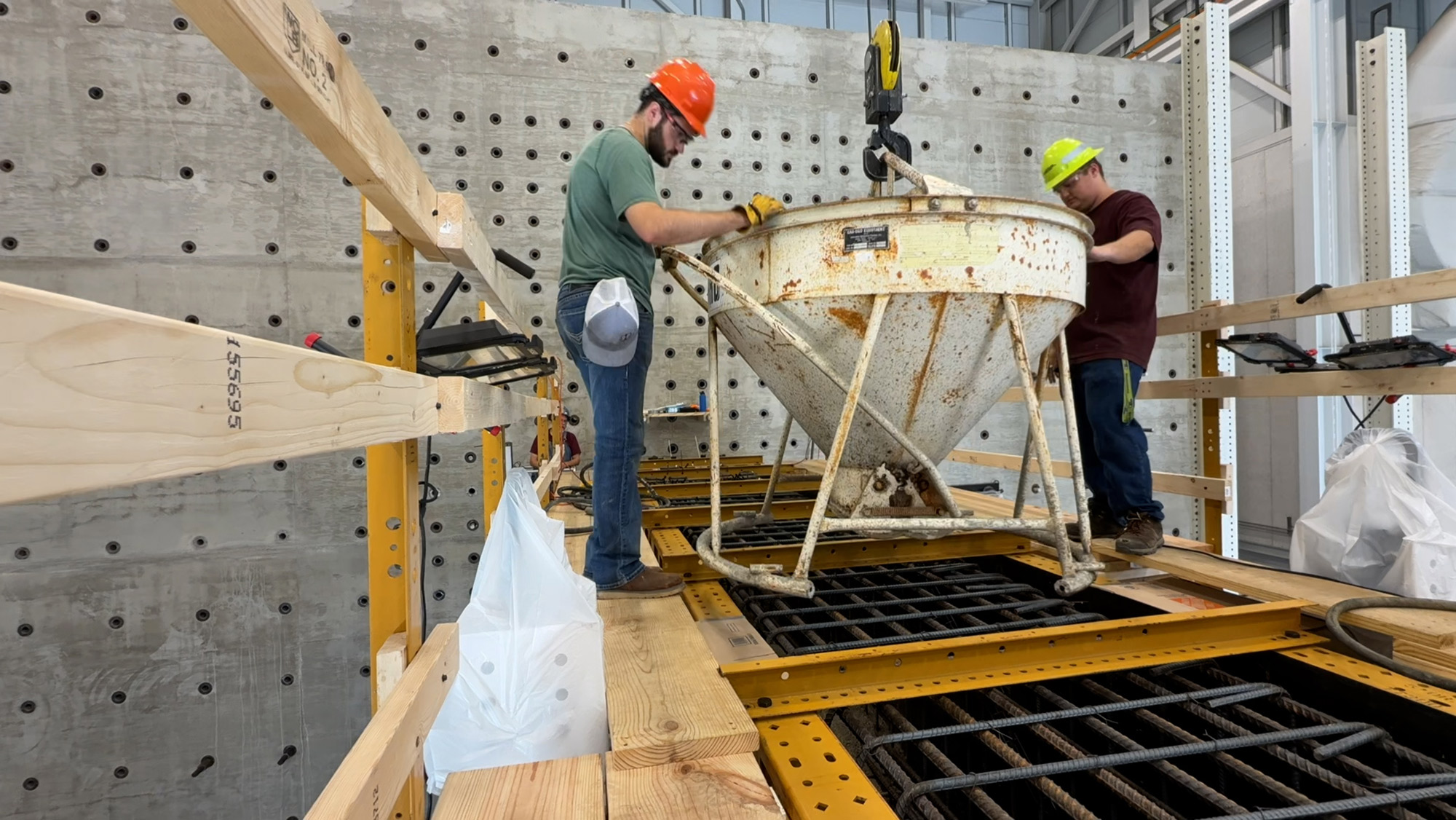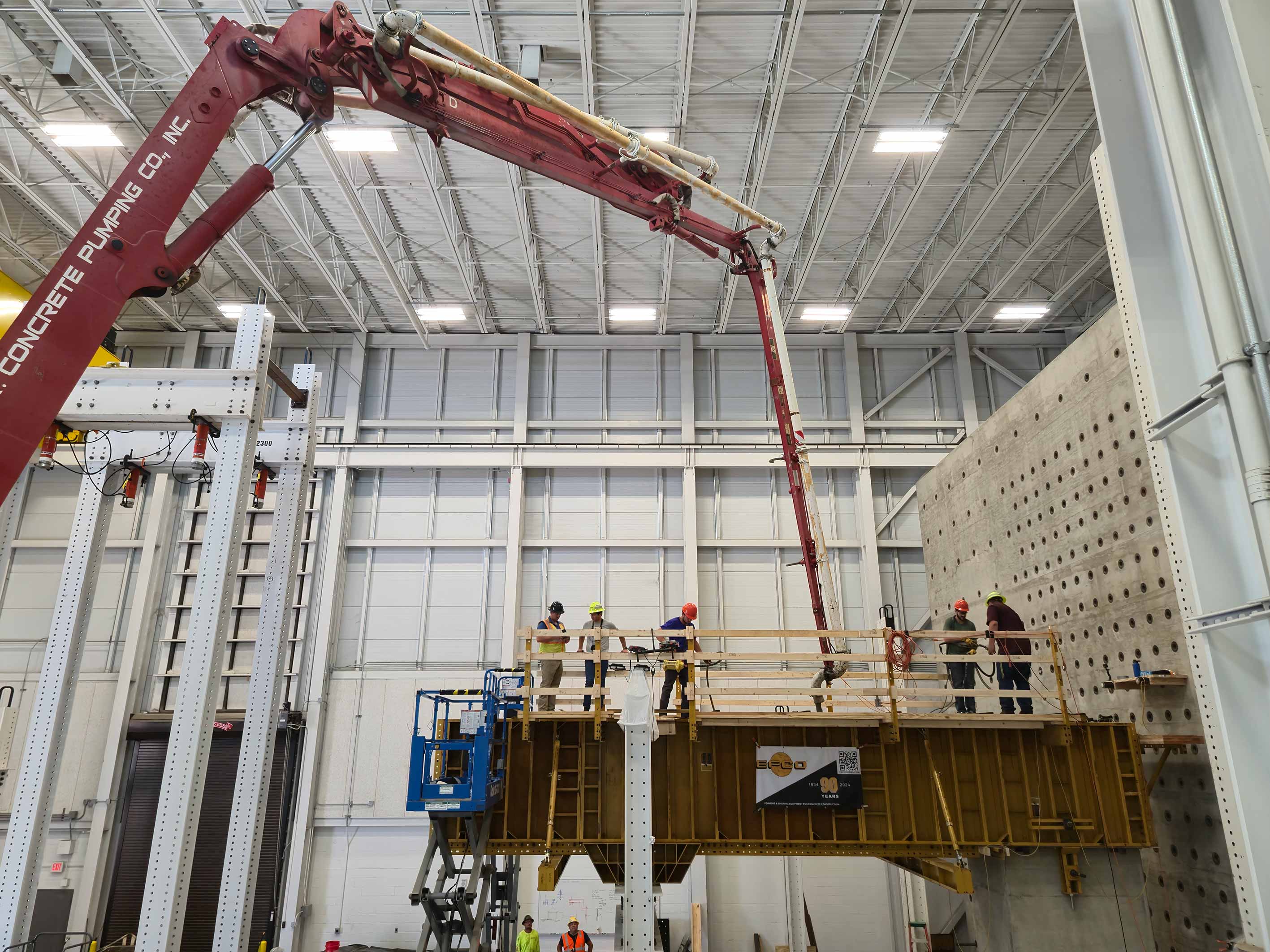
A groundbreaking method for bridge construction is set to enhance performance, reduce construction time, and cut costs for future bridges across Texas.
Dr. Kinsey Skillen, assistant professor in the Civil and Environmental Engineering Department at Texas A&M University, was named Principal Investigator (PI) of the Texas Department of Transportation (TxDOT) research project titled “Develop/Refine Design Provisions for Headed and Hooked Reinforcement.”
The 42-month project, which received nearly $1 million in funding, is a joint effort between the Texas Transportation Institute and the University of Texas at San Antonio (UTSA) exploring more efficient methods of anchoring steel reinforcement in bridge structure joints to enhance structural performance and accelerate construction timelines.
One specific bridge structure being researched, known as a “straddle bent,” consists of two large columns and a beam to support elevated roadways. The reinforcing steel that joins the beam to the columns currently requires meticulous design and construction considerations. This research aims to provide TxDOT with updated design guidelines for using hooked and headed bars in bridge structures, supported by full-scale experimental testing.

An innovative approach currently under evaluation is the use of “headed bars,” which are reinforcing bars with a large nut-like head attached at the bar end to prevent it from being pulled out of the concrete. Full-scale straddle bent joints incorporating headed bars are currently undergoing construction and testing at the Center for Infrastructure Renewal’s High-Bay Laboratory.
This study will be the first of its kind to establish design provisions for the use of headed reinforcement in bridge structure applications, offering TxDOT bridge engineers robust design guidance for future projects.
Additional tests are being conducted at the Large-Scale Testing Laboratory at UTSA, led by Co-PI Dr. Adolfo Matamoros. Such tests focus on further understanding the load transfer mechanisms provided by hooked and headed bars in additional TxDOT bridge applications.
Skillen specializes in large-scale structural testing and the behavior of reinforced concrete structures. His research interests include field monitoring of structures, bond and anchorage of steel reinforcement, strengthening existing structures, shear and torsion, and structural applications of ultra-high-performance concrete.
